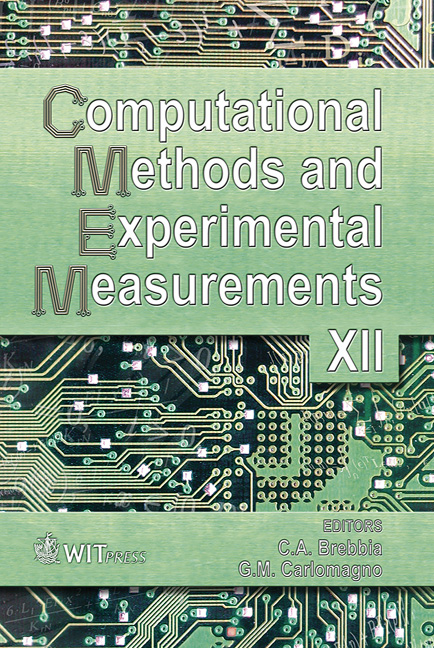A Finite Element Method For Heat Transfer With Convection Effects Embedded Into The Capacitance
Price
Free (open access)
Transaction
Volume
41
Pages
11
Published
2005
Size
417 kb
Paper DOI
10.2495/CMEM050081
Copyright
WIT Press
Author(s)
N. J. Rodriguez, J. L. S. Gaytan, J. F. B. Herrera & F. A. R. Guerrero
Abstract
Modeling of heat transfer over transporting domains requires methods that are efficient and accurate. Examples include semi-solid forming, die-casting, solidification, and other related heat transfer processes. Recently, the Control Volume Capacitance Method (CVCM) has been discovered where convections effects are embedded into the Capacitance term. The method eliminates instability problems known as induced numerical oscillation, when negative velocities are applied. Unfortunately, when using positive velocities, the Capacitance term is lowered. Then, the Capacitance may cross the zero dividing line and singular matrices arise. The aim of this paper is to present a Modified CVCM method in order to eliminate this drawback. 1-D Numerical testing is performed for code validation. Modified-CVCM solutions are compared against an available analytical solution. The approach is shown to be accurate, stable and computationally competitive. Keywords: convection, oscillation, heat transfer, capacitance, stability. 1 Introduction This paper presents a method that is developed to eliminate numerical oscillation due to convection effects. However, there are three distinct mechanisms by which the heat transference takes place: (i) Conduction, (ii) Convection and (iii) Radiation. In conduction, heat passes through the substance of the body itself whereas in convection heat is transferred by relative motion of portions of the body. It is of interest to study convection effects owing to transport of mass at the bulk scale. Effects at the dendritic scale, i.e. micro-segregation, are not
Keywords
convection, oscillation, heat transfer, capacitance, stability.





